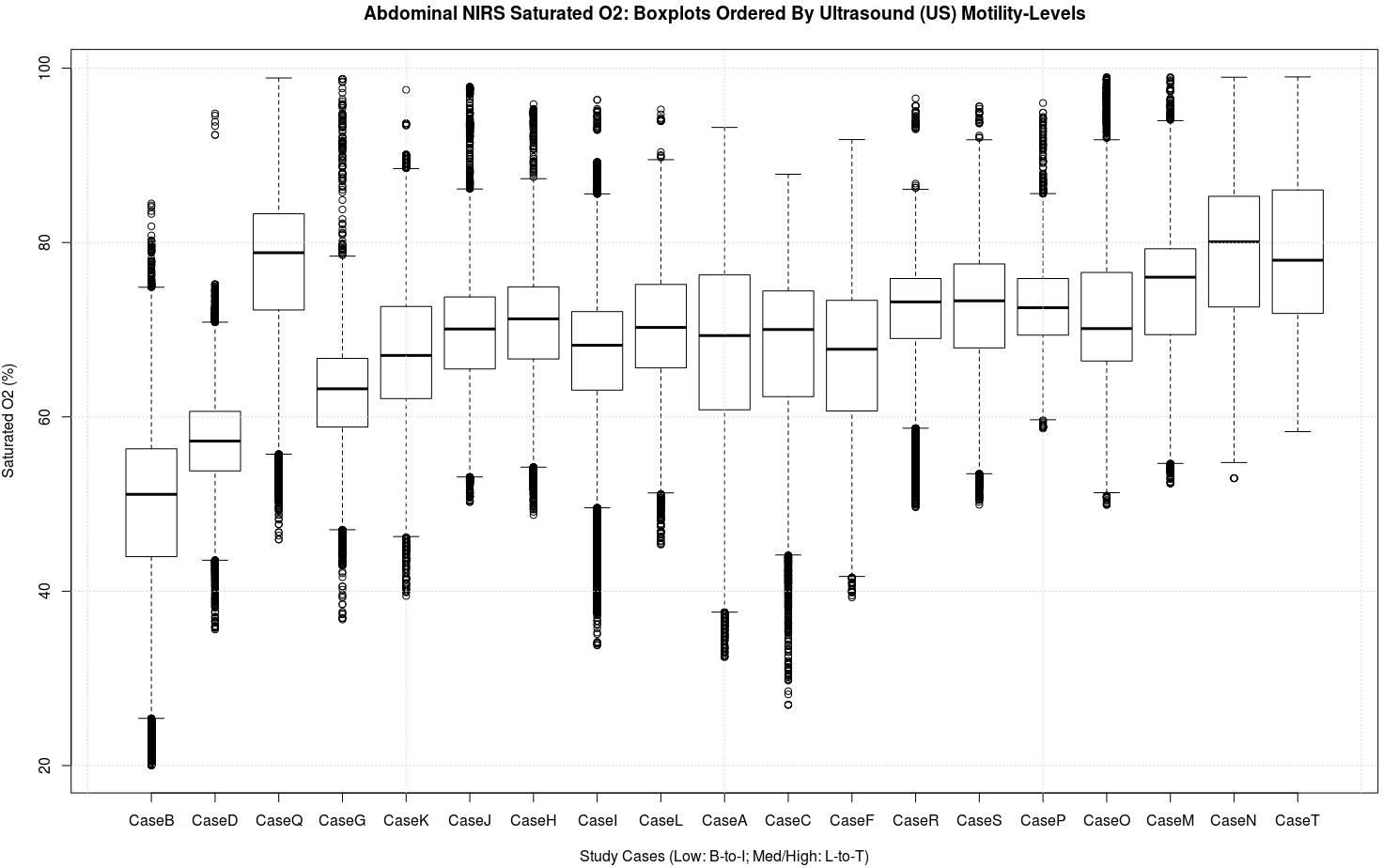

Giving babies the best start for the rest of their lives...
Abdominal Motility Using NIRS
ABSTRACT:
Title: Abdominal ultrasound and near infrared spectroscopy to evaluate intestinal function
Background: Enteral feedings remain a diagnostic challenge in the NICU, particularly to determine which infants are at risk of feeding intolerance and necrotizing enterocolitis. Assessing bowel motility by Real-time ultrasound in newborns may be helpful but it does not provide a continuous measure.
Objective: To investigate determine whether abdominal NIRS can estimate which infants have minimal or increased bowel motility as quantified by bowel ultrasound.
Design/Methods: Serial ultrasound scans was performed using a GE-Vivid E9 and 11 Mhz liner probe. To examine intestinal motility, 30 second (3 consecutive 10 second) grayscale clips were stored from the left and right mid to lower flank. Motility was classified as the total number of distinct peristaltic movements visualized on each side and average. Low motility was defined using previous norms of (<5 low, e"5 normal-increased). Groups were then analyzed by each group. Tissue hemoglobin oxygen saturation measurements were recorded for 24 hours and were then averaged over 4 minute intervals.
Results: Nineteen neonates were enrolled in the study. Low motility infants had lower scores and were more likely to be male.
Conclusions: Abdominal NIRS can differentiate between neonates with low and increased motility. Larger prospective evaluation is needed to determine which infants are at risk for feeding intolerance and/or necrotizing enterocolitis.

Infants in the high motility group had higher average StO2 compared to the lower motility group (F-stat 2561, p < 0.001)